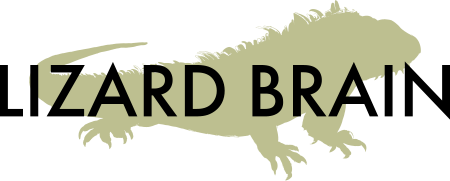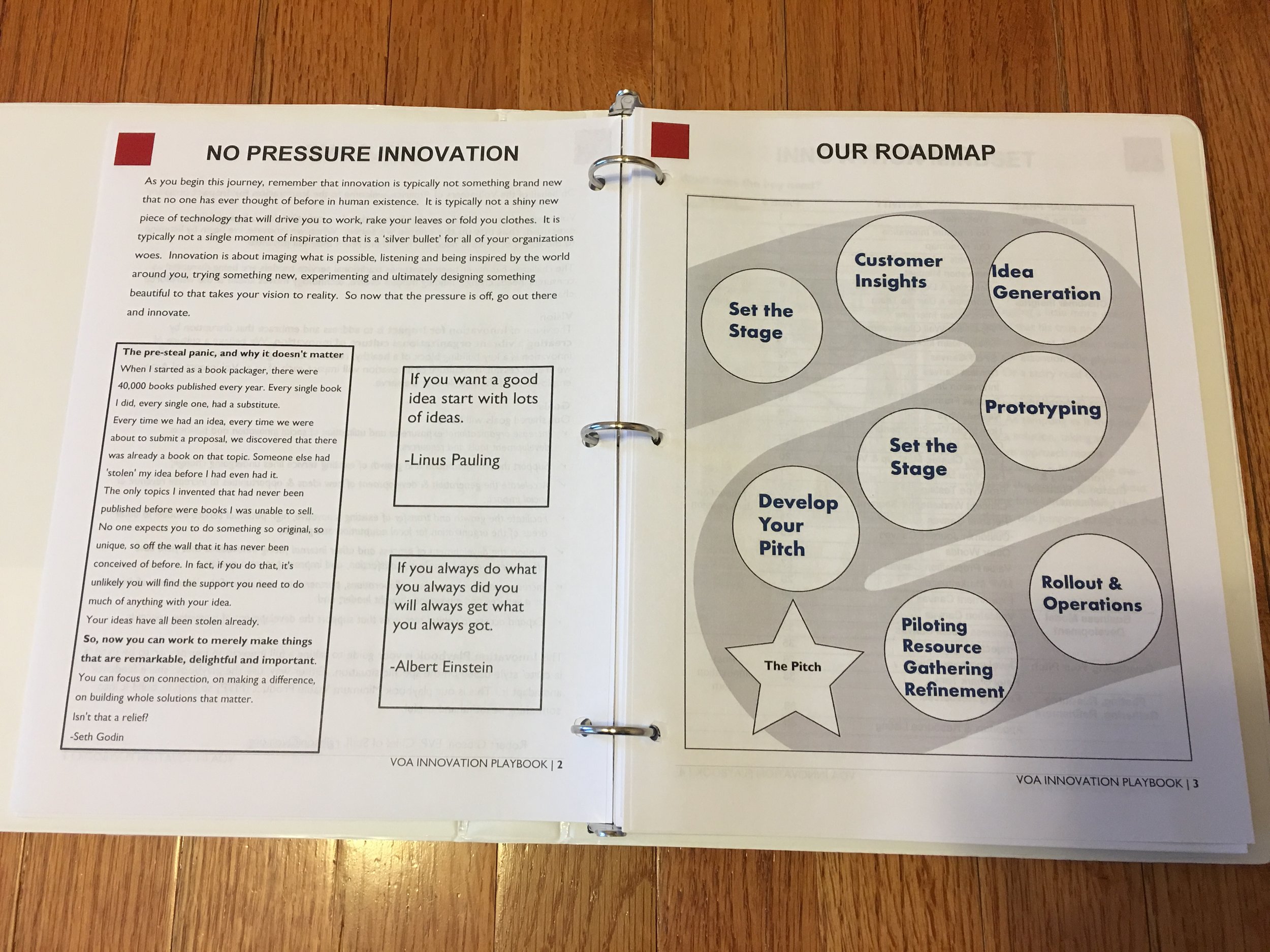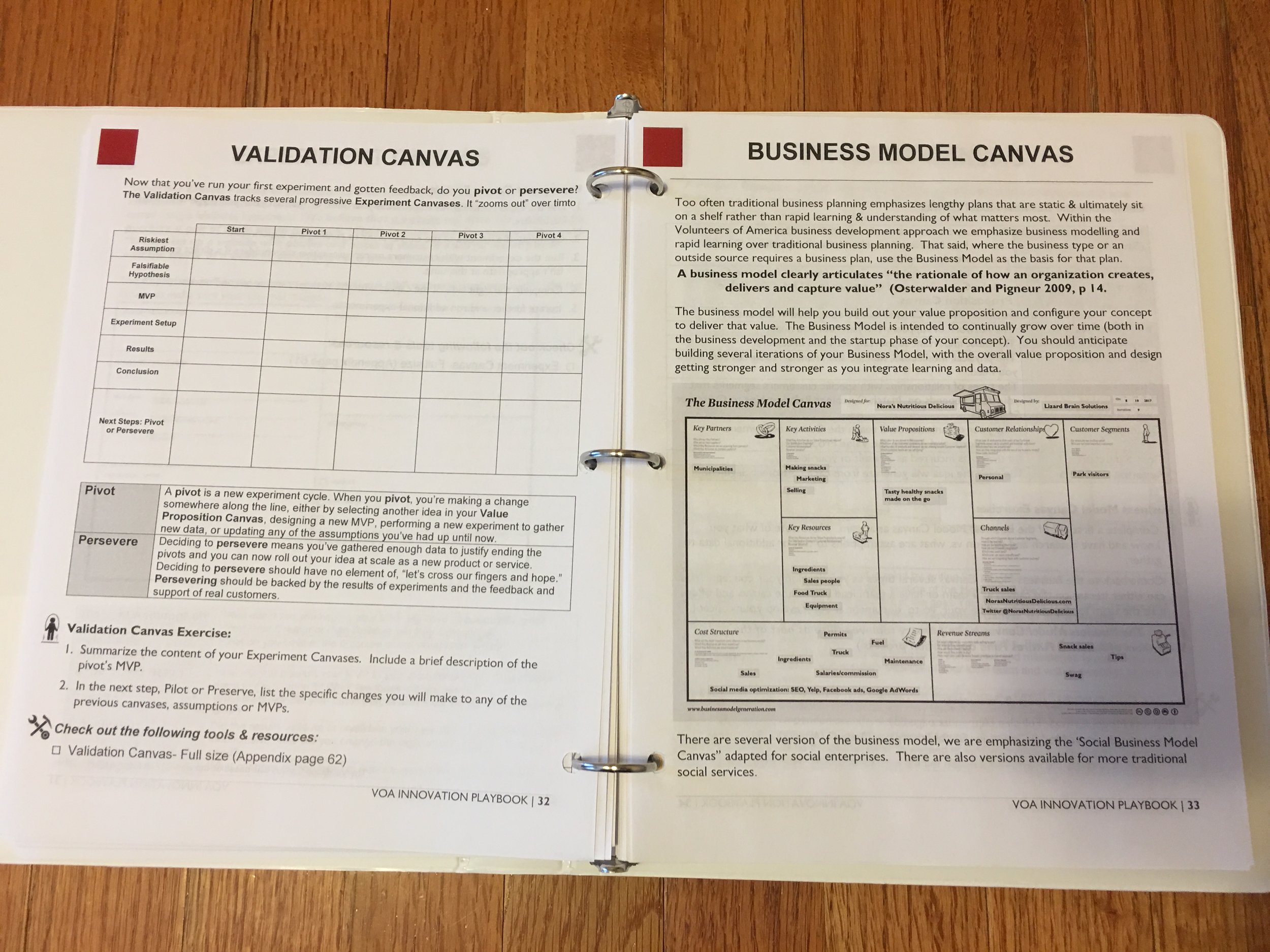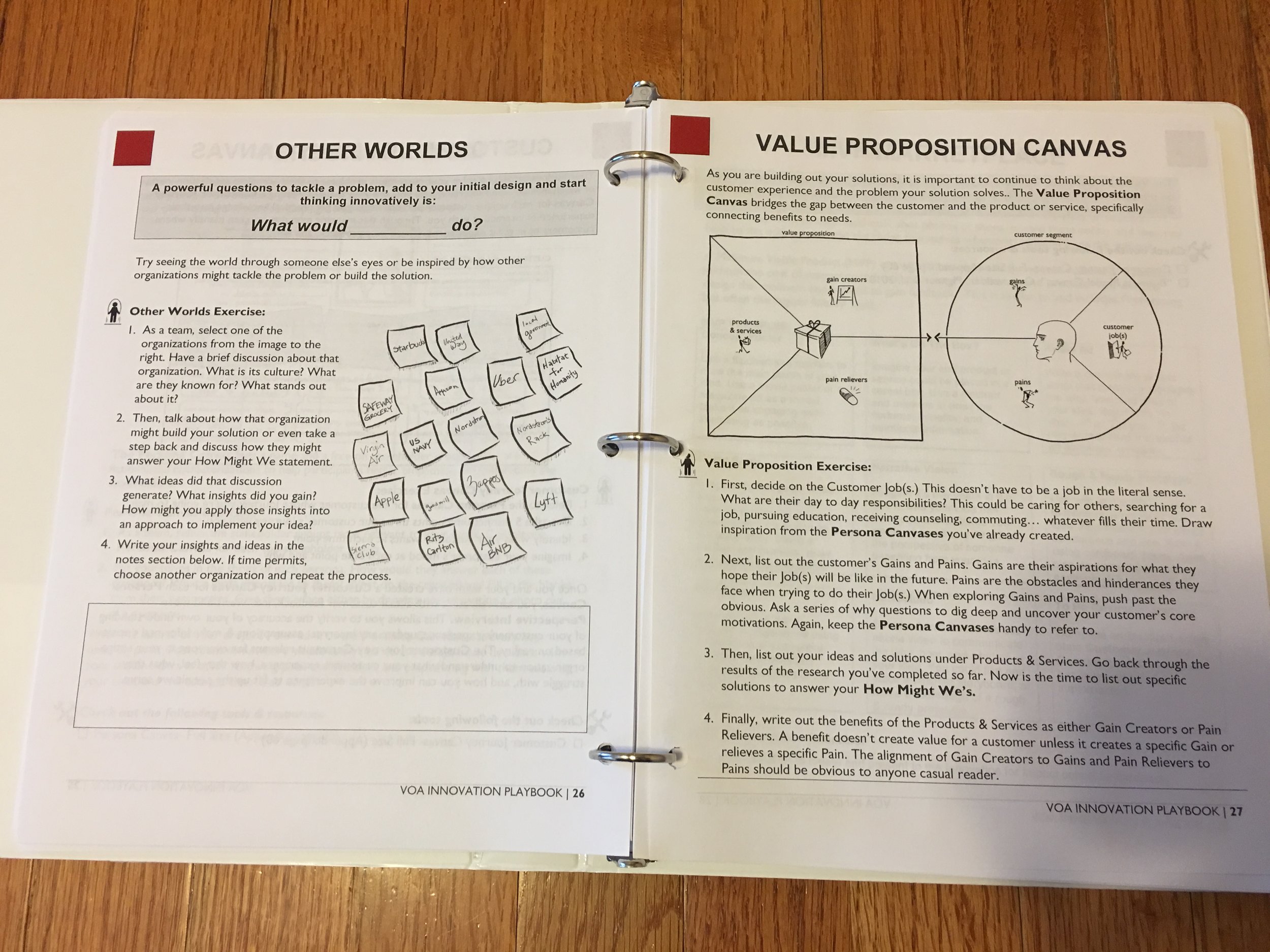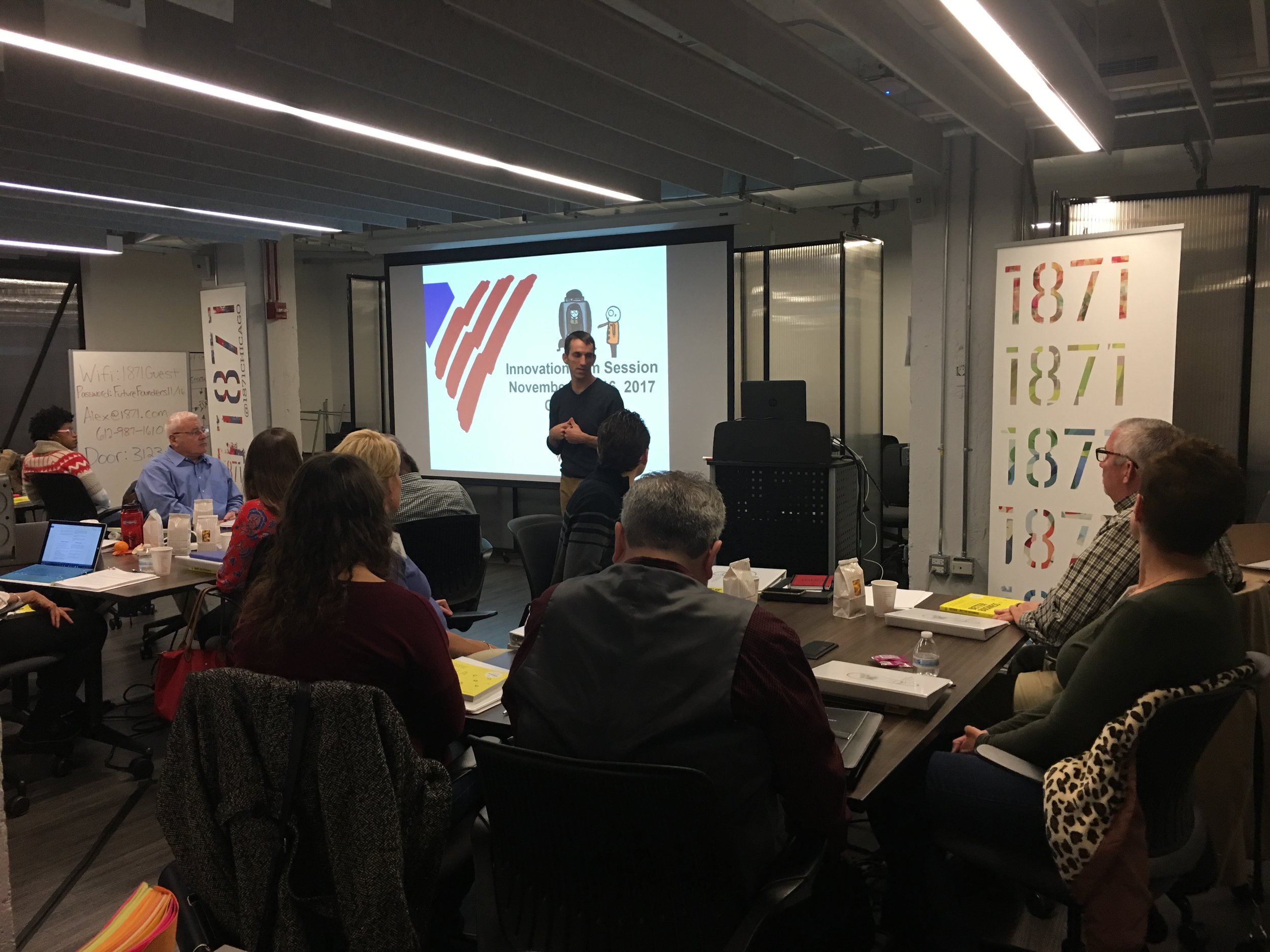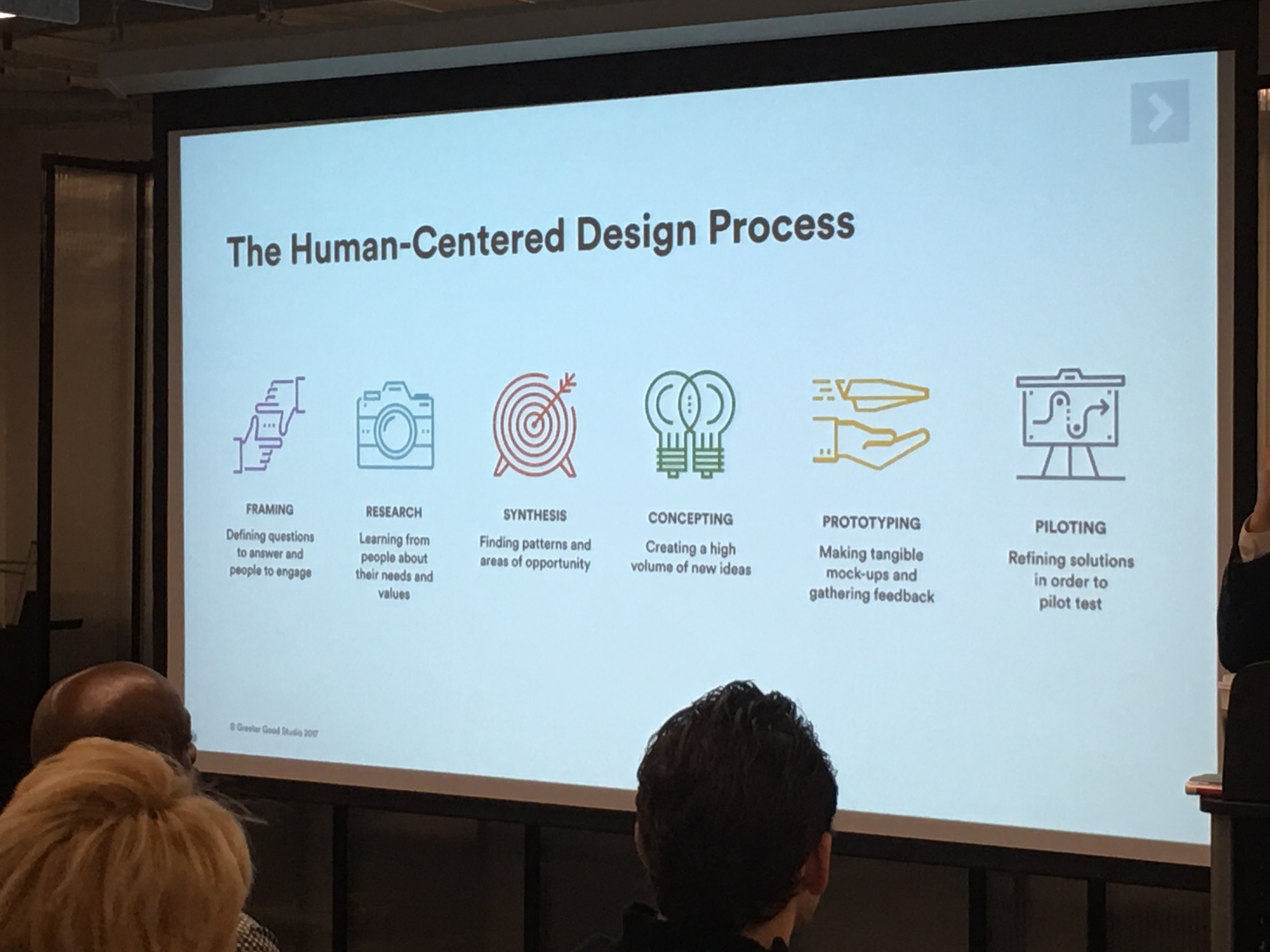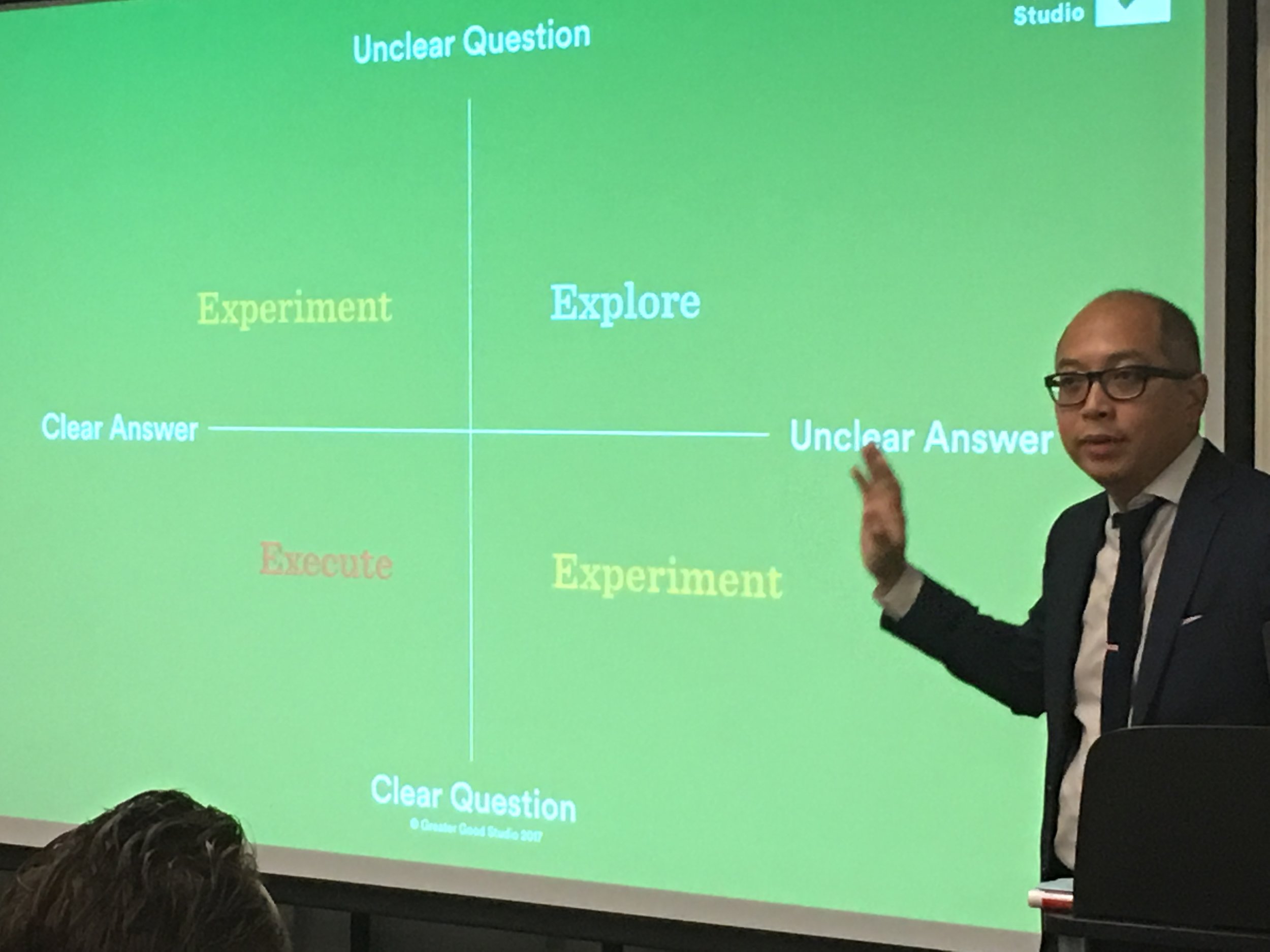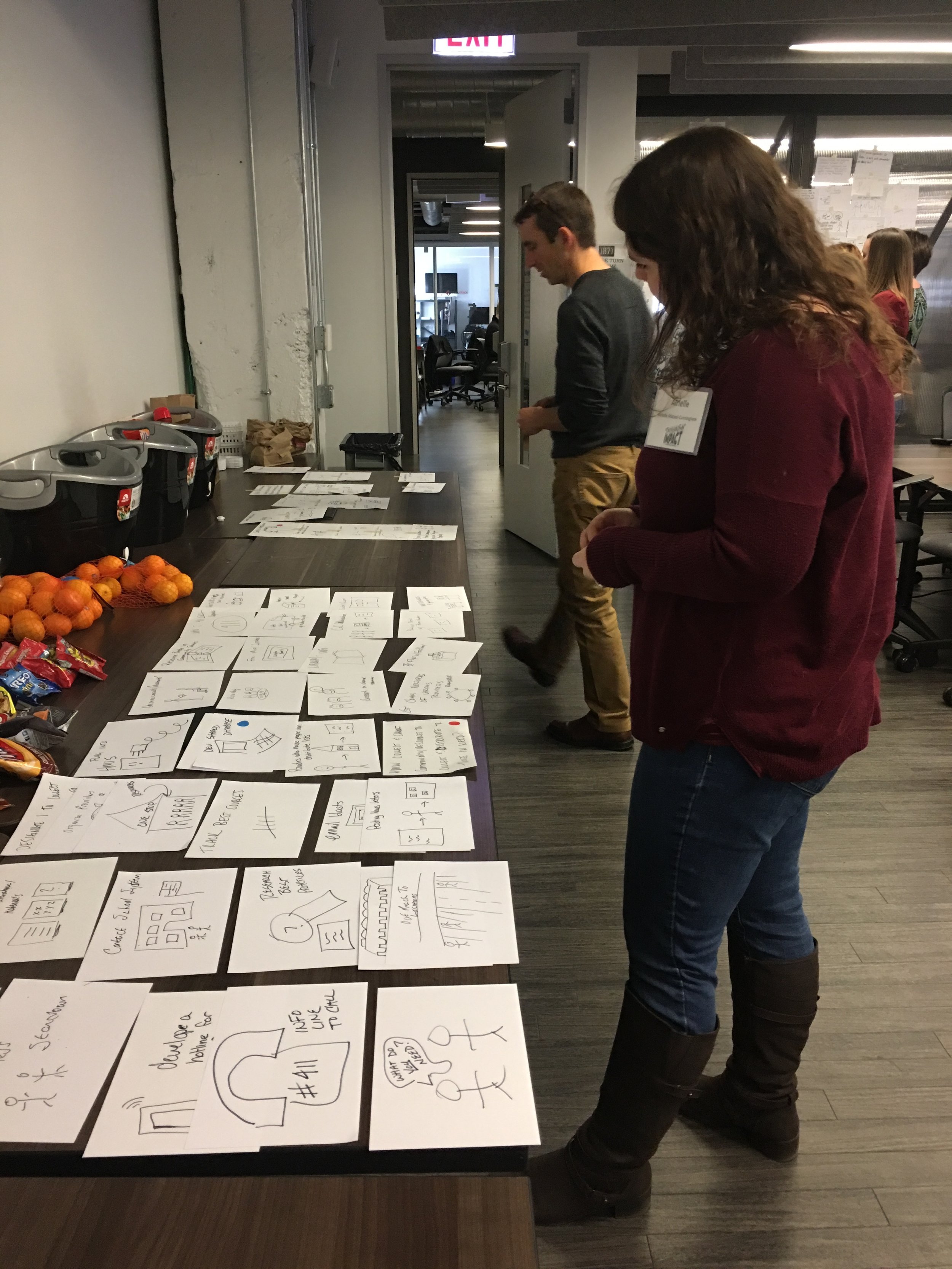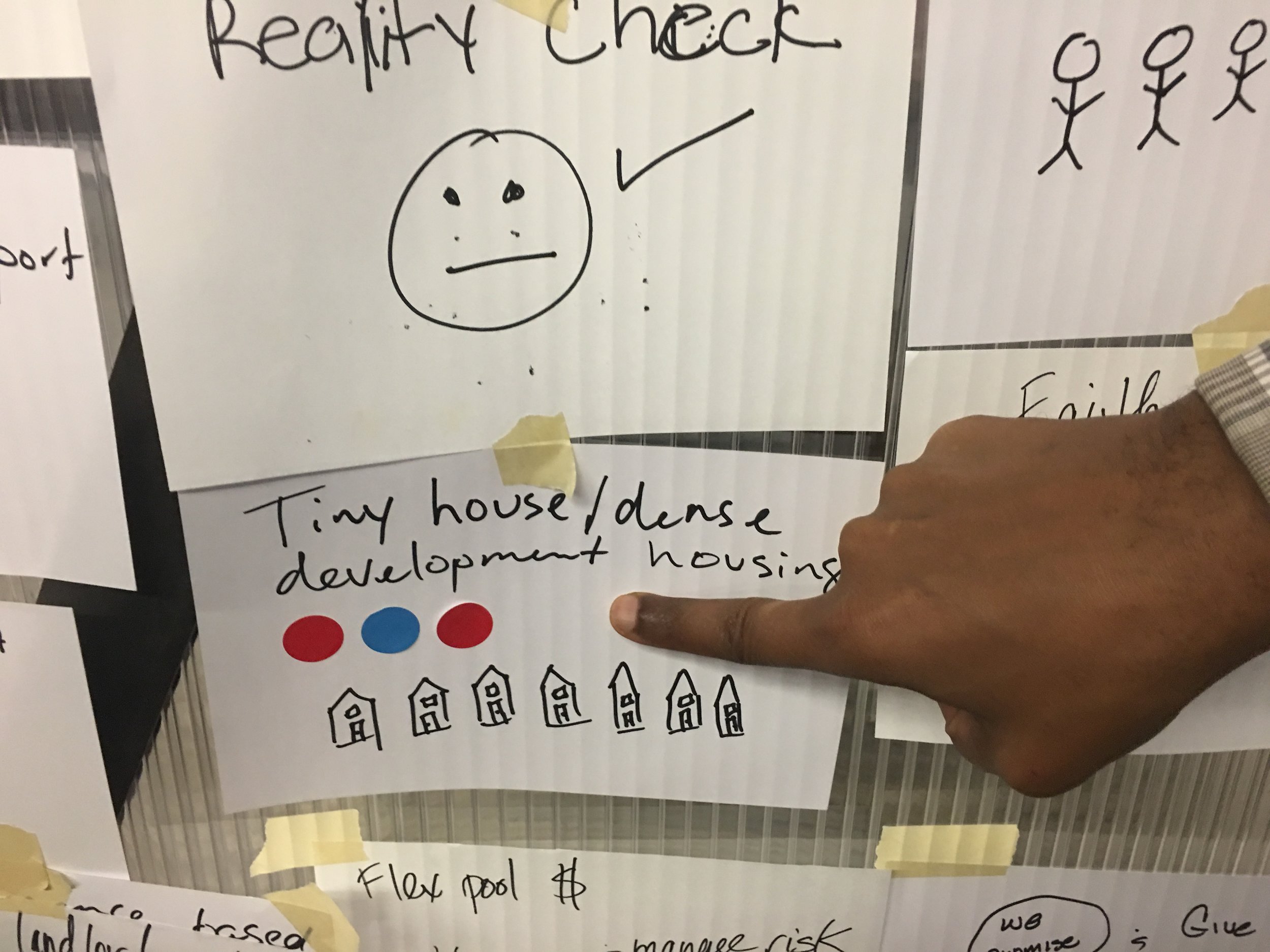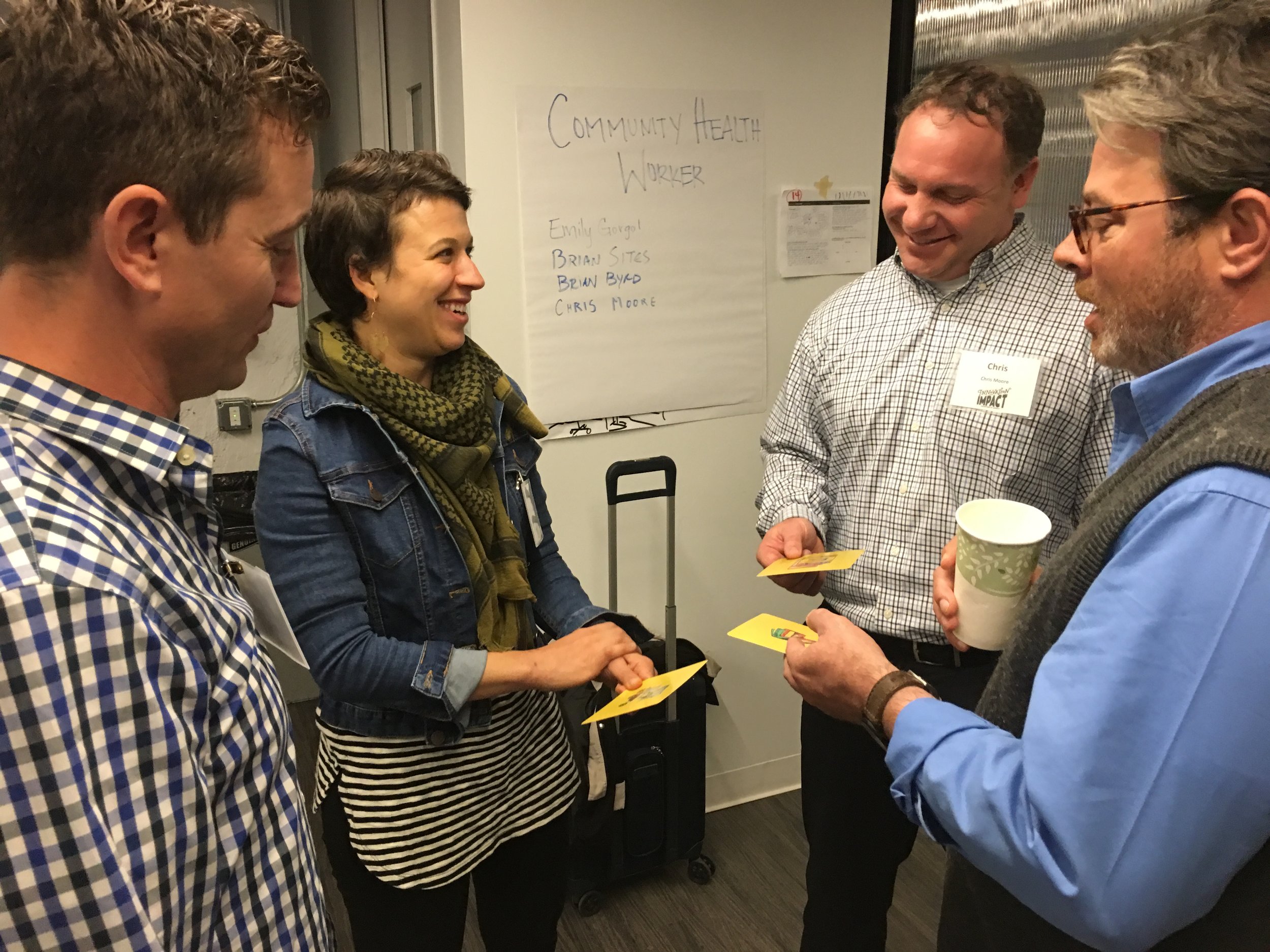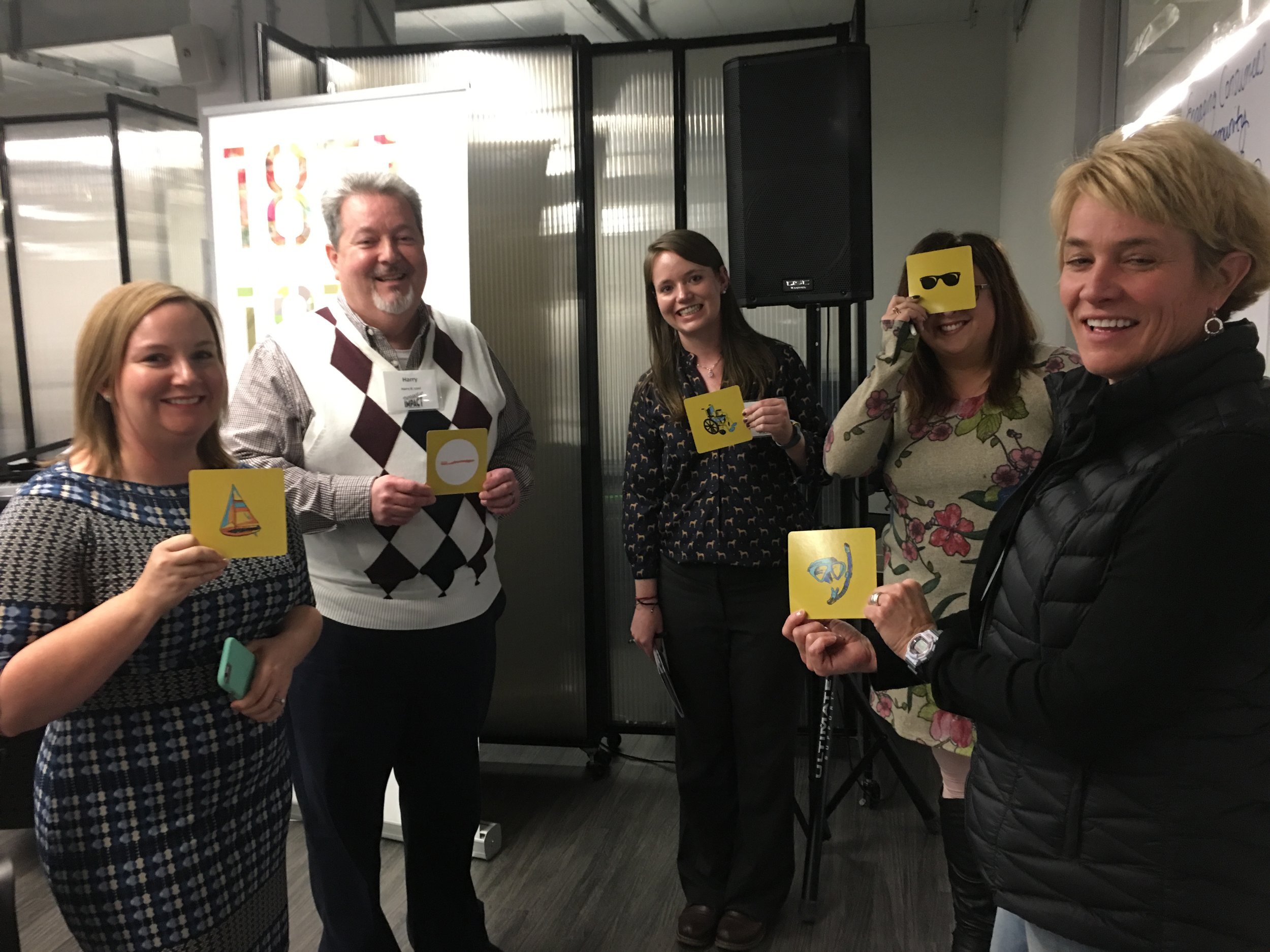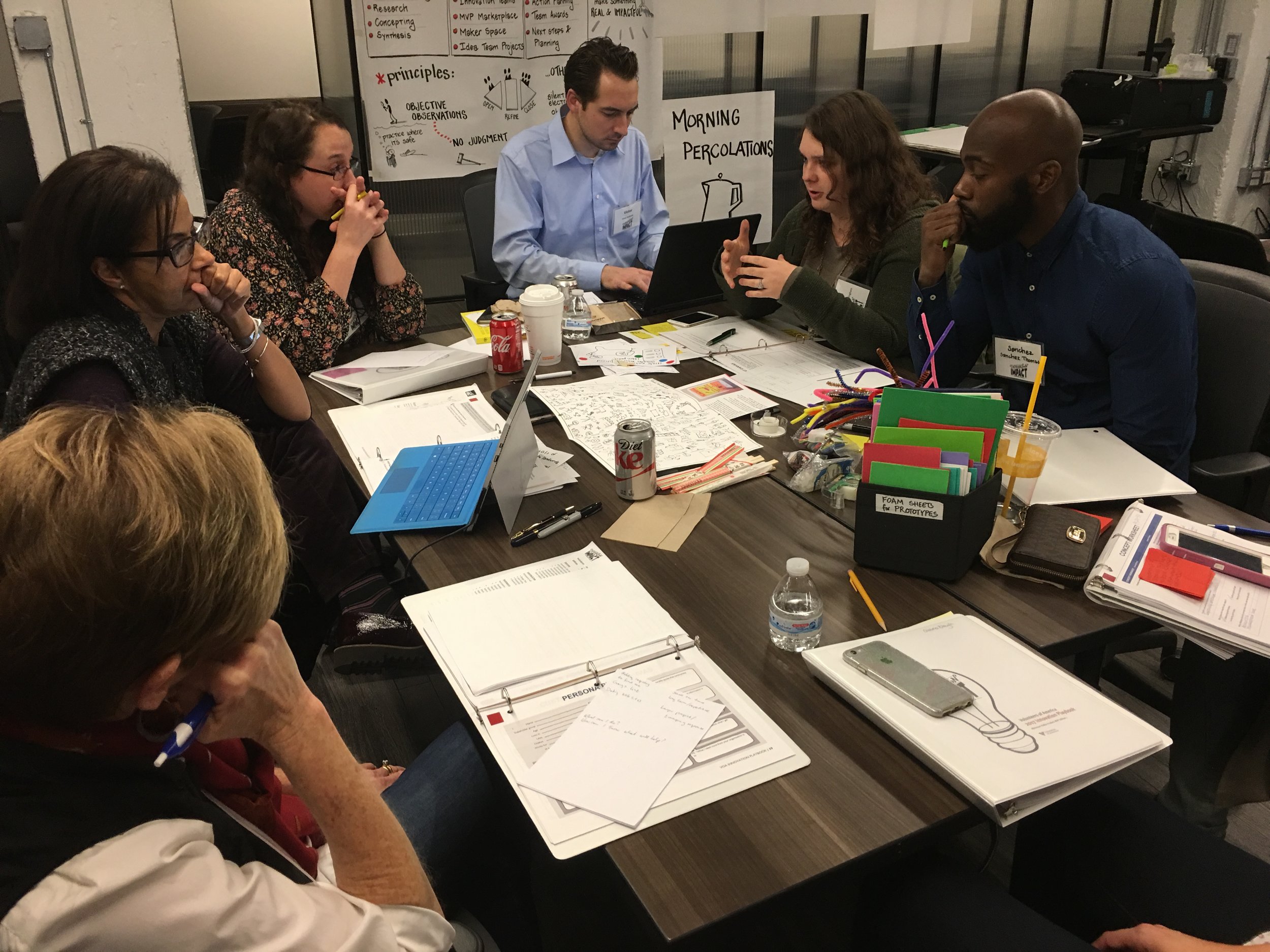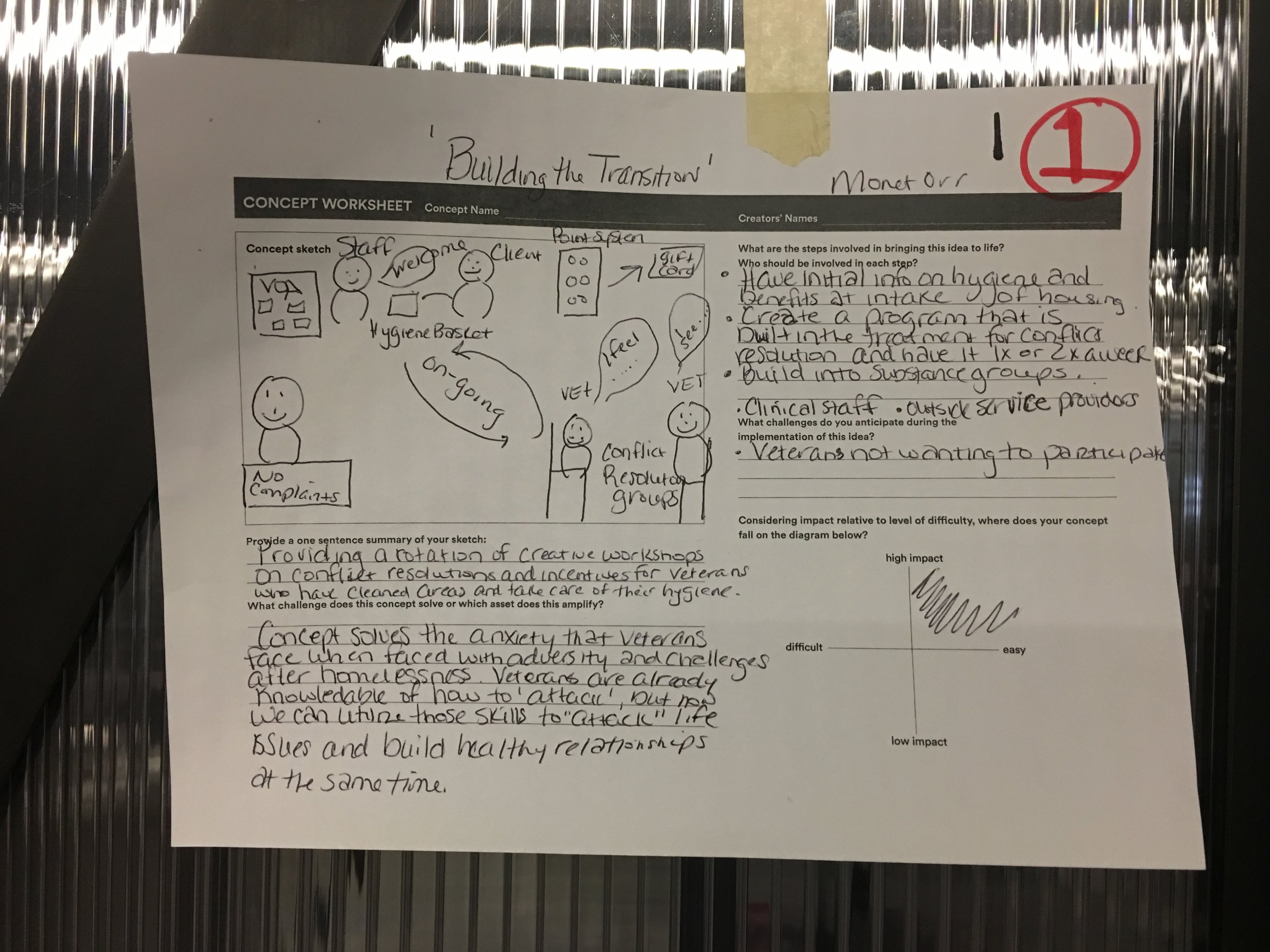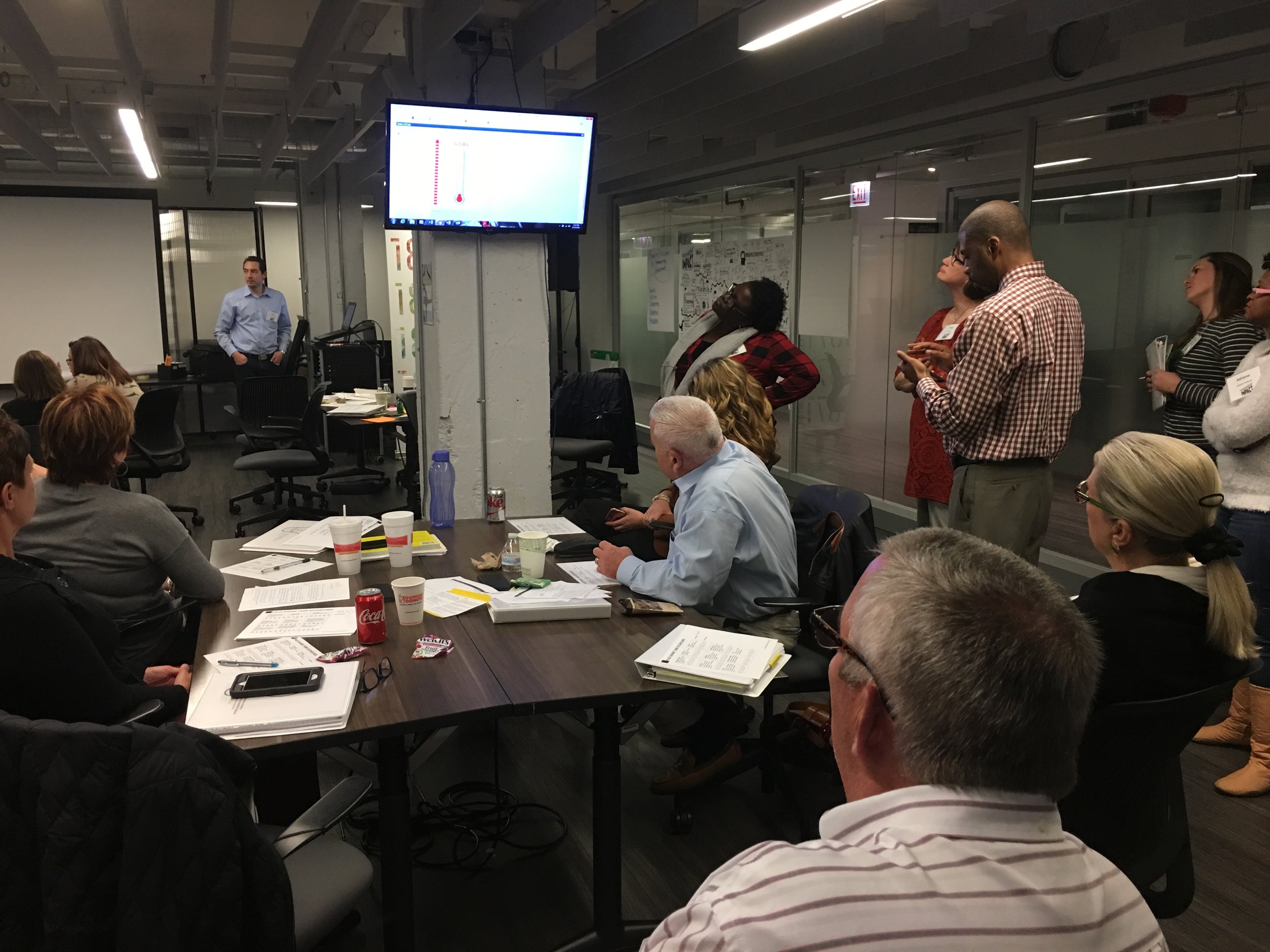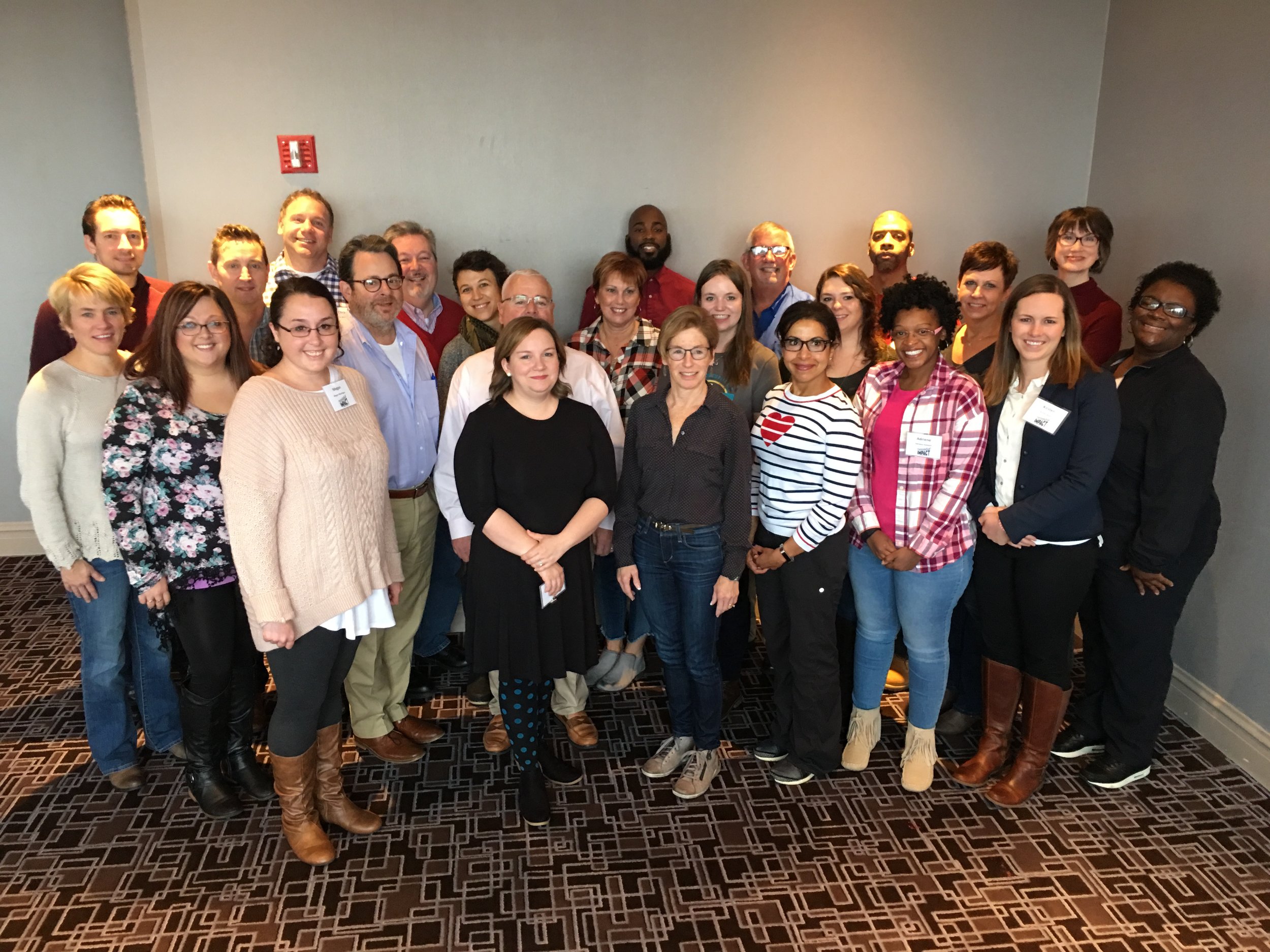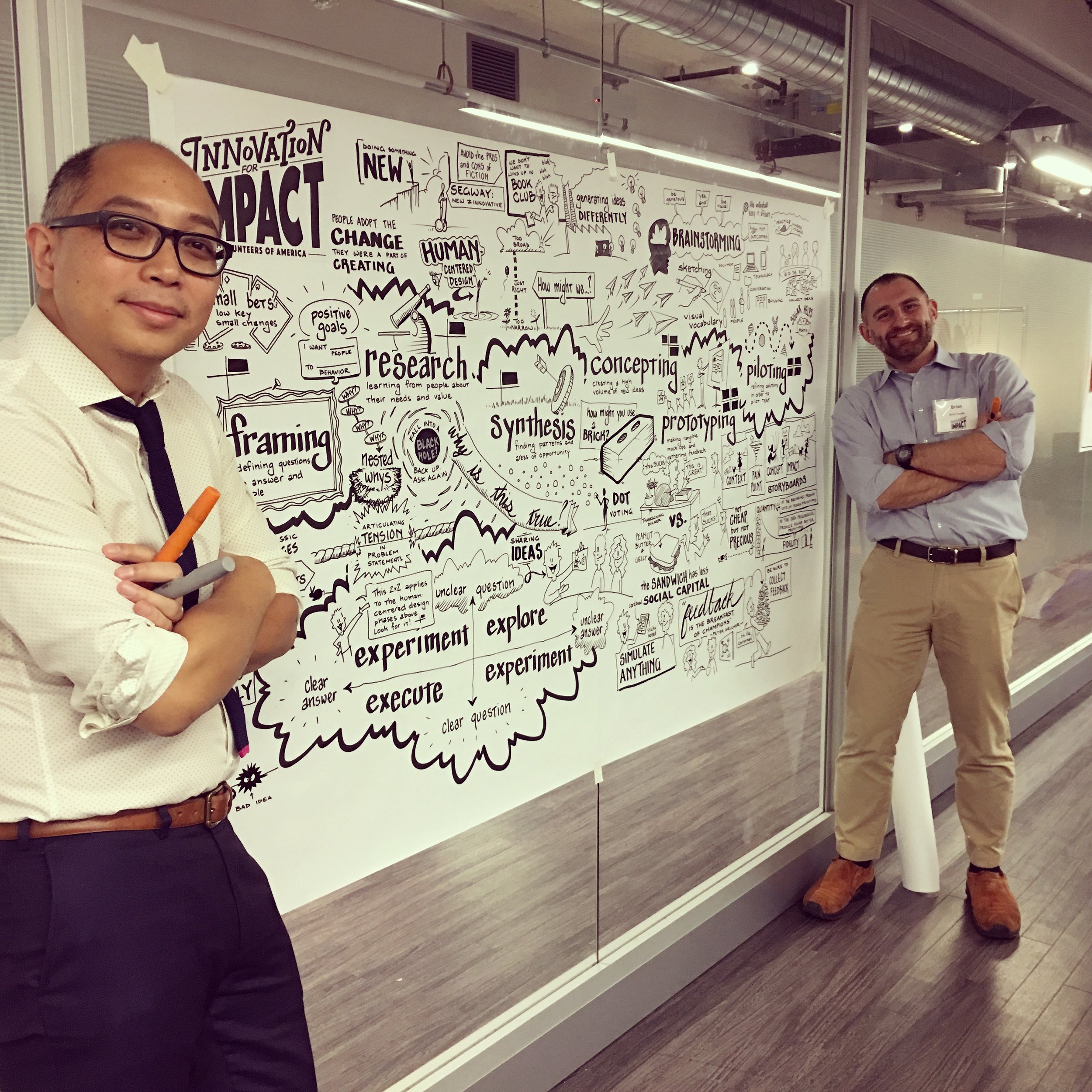A Playbook for Design Thinking - Volunteers of America's Innovation for Impact
How do you teach a nation-wide organization design thinking? As part of their Innovation for Impact program, Volunteers of America came up with a design thinking playbook... with a little help from Lizard Brain Solutions.
From the beginning, we opted to see the program from the perspective of a newcomer to design thinking. In doing so, we found our first, biggest challenge: with so many design thinking methods out there, understanding them all can be overwhelming. Design thinking methods can be difficult to present concisely in a way that newcomers can quickly apply.
We chose to design a "playbook" of design thinking methods: a selection of certain methods presented in a prescribed sequence. Philosophically, design thinking eschews prescribed approaches in favor flexible frameworks. However, we wanted the Volunteers to see a start-to-finish approach to build a baseline for understanding. That baseline could then be augmented and iterated against as the Volunteers learned more and more methods.
We used analogies to guide our thinking. One analogy was that all design thinking methods are like a library. Without purpose or guidance, someone walking into a library can easily become overwhelmed by the amount of information before them.
We began our design by reviewing collections of proven methods from:
- Design a Better Business, by Justin Lokitz, Lisa Kay Solomon, and Patrick Van Der Pijl,
- IDEO's Method Cards,
- The Lean Startup by Eric Reis, and
- The LUMA Institute's Innovating for People.
We chose twenty or so methods and wrote them out as thumbnail sketches on index cards. We then sequenced them logically and created an MVP: a minimum viable product, or a working prototype that could do the job of conveying the design concepts we wanted to share.
We tested our approach by sharing the MVP with people with no background in design thinking. They gave us feedback on the methods we chose, telling us what made sense and what didn't. From their feedback, we removed and added methods and changed the sequence.
The MVP lacked polish, but the low fidelity wasn't a barrier to others understanding what we were trying to convey. The quick and dirty approach saved us the time and effort of designing and refining methods that may not have made the final cut.
After coming to what we felt was an 80% solution on the methods and sequence in the MVP, we scanned each card and dropped the images into a Google Drive folder. Each card image became a placeholder for a page in the playbook. We created a simple table to track progress against Text, Image, and Layout for each card. Six associates in the Lizard Brain Solutions network contributed their work. The Google Drive folder became our collaborative work space for the playbook as we passed the elements of each method back and forth to finalize. When someone began work on a particular method, they would add their name to the progress table. This let us work at our own pace and self-select the work that best suited our individual skill set. As each page was completed, it was loaded to the Google Drive, the placeholder image was removed, and the method was checked off from the progress table.
By distributing the workload and agreeing on content up front with the MVP, we were able to go from concept to final playbook in less than two weeks. We opted to print the material in a 3-ring binder for cost savings and so that we could continue to iterate and add methods.
The playbook was central to the Innovation for Impact program and its keystone event, a three-day in-person workshop at the Merchandise Mart in Chicago, IL.
